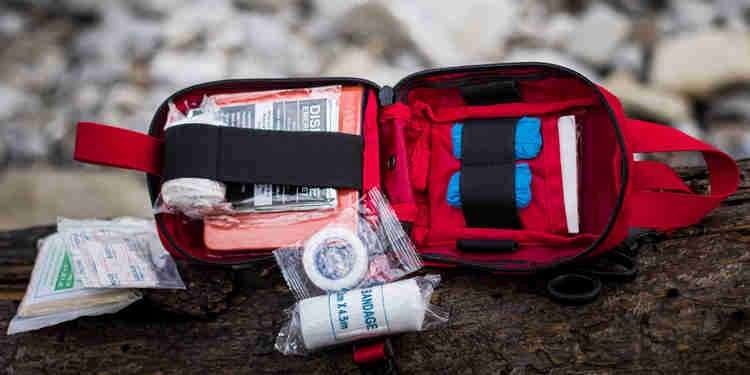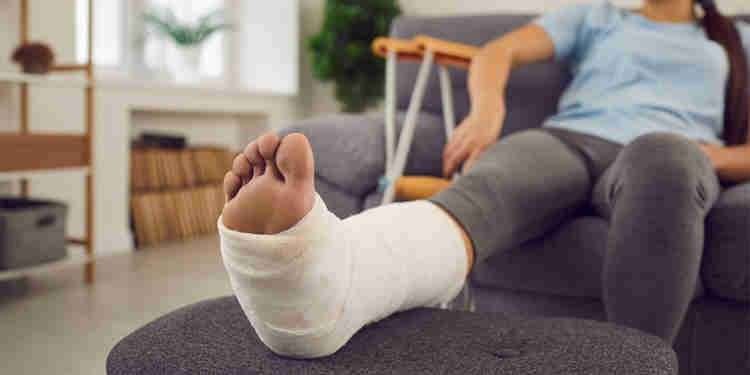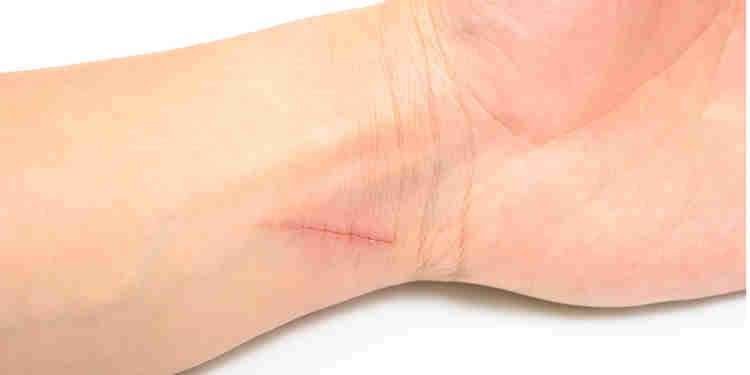At the moment, there are so many first aid kits sold at different prices in the online and offline market. These kits may look similar, but their contents and quality differ in so many ways. Therefore when searching for a first aid kit, it is vital to understand the problem you want to solve and the quality you need before choosing one. This article takes a look at some of the tips to find the perfect first aid kit.

Read on…
Different kinds of first aid kits and their contents
As mentioned earlier, there are various first aid kits to satisfy basic needs and some special needs. Here is a list of different kinds of first aid kits and their contents.
Basic first aid kit ( home or workplace)
The basic first aid kit is used for primary first aid care at homes or workplaces. It is required for low-risk to high-risk hazards. The basic first aid kit contains the bare minimum, and it is upon which advanced and other specific first aid kits are built.
Catering first aid kit
Kitchens and restaurants are usually areas that buzz with so many activities, and as such, it is not unlikely for minor accidents to happen. Cuts, scrapes, burns are the most common mishaps in a kitchen or cooking setup. Typically catering first aid kits contain basic content, including gauze, methylated spirit, plasters, cotton wool, and topical ointments. They also contain soothing gels, which are more specific to cater to burns and blisters.
Sports first aid kit
Sporting activities or highly athletic and require a lot of expended energy produced by parts of the bones and muscles are often prone to fractures as a result of hits and kicks on the limbs, and also more susceptible two dislocations muscle tears avulsions, sprain, strain, and trauma to the head. Sporting first aid kits are equipped to address the common injuries faced on the field or track. These items include pressure bandages, ice packs, analgesics, splints, triangular bandages, gauze, and heat sprays.
Travel or car first aid kit
Going out on adventures by road or any other form of transportation, one encounters and experiences mishaps. The travel first aid kit is essential for people going out to camp or engaging in similar outdoor travels. A travel first aid kit should contain gauze, eye protection, tweezers, anti-allergy drugs, topical antibiotics, eyewashes, burn ointments, insect repellants.
Sourcing First aid kits
While sourcing for first aid kits, many questions go through people’s minds, including the kits’ price, adequacy of the kits, and ease of use. There is always a little dilemma in deciding which first aid kit to procure. The case of getting a first aid kit Is such that everyone wants to get a pocket-friendly first aid kit that is sufficient to cater to any first aid needs while also being compatible with the user’s first aid skills. The following are important things to consider before acquiring a first aid kit and guide you towards making the best choice to suit your needs.
Activities and what injuries might occur
This should be a top-of-the-list consideration for anyone who is looking for a first aid kit. The level of activities you carry out determines how likely you will have an injury or accident. Injuries are more likely to occur in certain activities than some others.
Certain occupations have associated hazards, accidents, or peculiar Injuries associated with them. Your first aid kit supplies must be adequate and useful in addressing specific Injuries.
Below is a list of the kind of Injuries, predisposed categories, and first aid kit supply requirements
1. Gunshot injuries
Police officers and bodyguards are more susceptible to gunshot injuries. To cater to gunshot injuries, a first aid kit should contain,
● Tourniquets: stop bleeding on limbs by occluding cut blood vessels.
● Hemostatic dressing: prevent further bleeding and arrest blood flow
● Decompression needles and chest seals in cases of a gunshot to the chest prevent air entry into thoracic chests and prevent lung collapse.

2. Hypothermia and frostbites
This is a condition of abnormally low-temperature hyperthermia. It can occur in hikers and mountain climbers at high altitudes and shallow temperatures or for long periods in the snow. If you are a person who engages in any of these or any closely related activity, you require in your first aid kit,
● Space blankets: Space blankets aids in conserving and preventing further heat loss from the body.
● Heat pads and blankets: this helps to generate and radiate heat to the body of the victim.

3. Sprains, Strains, and Fractures
Participating in high-energy activities that require lots of muscular effort and are strenuous could result in falls and trauma. High Impact on the limbs can sprain, strains, and Fractures. Athletes are also, to a high degree, prone to muscle injuries and bone fractures. While medical professionals typically manage bone fractures, first aid is crucial at the initial moment of injury. For sprains, strains, and fractures,
● Pressure bandages: This reduces and prevents further swelling in the affected area.
● Immobilizing splints: Splint immobilizes the fracture areas and provides a form of stability to support the moon’s weight before any further procedure can be performed.
● Ice packs: Ice packs work to reduce inflammation at the site of injury and prevent swelling
● Triangular bandages: This keeps the injury site in place and reduces the mobility of the injured limb before professional medical care.
All these are helpful supplies to provide initial relief before heading out for medical intervention.

4. Burns
Burns occur from exposure to flame, scalding by hot water or scorching surfaces, and kitchen ingredients. Chefs, food service personnel are also at a higher risk of getting burnt. Burns could also result from exposure to highly caustic household or industrial chemicals. The first aid kit should contain supplies needed to relieve first-degree burn victims adequately. Supplies include
● Topical sterile cooling gel: gels are usually local anesthetics that serve to numb the area of the burn, provide soothing relief and reduce pain to the affected area
● Cold packs: cold packs help to minimize and prevent swelling of the affected area by slowing down the process of inflammation.
● Burn dressings: burn dressings are modified to cover areas of burns without being harsh to the already tender affected
area and prevent further injury
● Eyewash pods: in situations where caustic chemicals contact the eyes, sterile eyewash liquids help gently cleanse the eyes and remove the incriminating agent, thus providing relief to the victim.
● Irrigating and neutral solutions: acid and chemical burn victims provide immediate relief with neutralizing solutions that help prevent further harmful effects of the chemicals on affected areas.

5. Blast injury
Injuries from blasts come with a unique pattern and are characterized by high levels of trauma. A single blast can cause multiple severe injuries to various parts of the body. First aid kit supplies for blasts are directed at arresting bleeding and reducing pain for the victims. They include bandages, trauma shears, eye shields, tourniquets, and hemostatic agents.

6. Cuts
A cut is the most generic injury. Individuals of every age, every level of activity, or every profession can get a cut. Good enough, cuts can easily be handled and might not require medical attention except in severe cases or individuals with bleeding and blood clotting disorders.
Cuts can easily be managed with methylated spirit cotton wool, adhesive plasters, and gauze; all of these reflect any first aid kit’s basic contents.

7. Animal bites
Zookeepers, pet owners, and adventurous explorers can suffer bites from animals. Animal bites share similarities with cuts, albeit with deep puncture wounds.
Kits should contain antiseptic preparations to prevent wound sites, cotton balls, gauze, and simple skin sutures.
Some miscellaneous items such as an automated external defibrillator (AED) to help in cases of cardiac arrest, resuscitation airbags to assist breathing can also come in handy in some first aid kits. Glucose injections are also crucial in kits for diabetic individuals to arrest hypoglycemia (dangerously low blood sugar levels).

First aid skill and knowledge
As alluded to, first aid boxes are also designed to consider how many first aid skills a person possesses. While most first aid kits are manufactured basically to be used by individuals without medical knowledge, others are designed for paramedics and ambulatory services, professional health individuals, and people who acquired first aid skills through medical training. The first aid kit contains more advanced medical tools which can be utilized to combat emergencies.
Ensure to select a first aid kit that is compatible with your first aid skills and knowledge. When a person with just a little or no first aid knowledge acquires an advanced first aid kit, it will culminate in waste due to the little knowledge about first aid care and the use of the advanced medical kit. Paramedics or acquired first aid training should opt for the advanced first aid kit to provide better and more effective first aid care.
Advanced first aid kit contains additional supplies such as intravenous kit, cannulas, complete surgical instrument set, a stethoscope, catheters, urine bags, endotracheal tube, resuscitation bags, and a host of other standard medical equipment.
Quality of kit content
In the search for a first aid kit, the consideration for quality should take precedence over the cost. First aid supplies made with high-quality materials cost more than those made with lower-quality materials. Variations in the kind of materials used for the cannulas, gauze, bandages, and dressings also affect the cost of the kit. High-quality supplies carry you a long way without getting damaged, and you can be assured of the effectiveness of your supplies. Resist the temptation to opt for little quality first aid kits, all in a bid to save costs. Why high-quality first aid kits are pricing is usually perfect for the job and worth the cost in the long run.
Compliance to Set down standards of first aid kits
The standard organization set a baseline criterion and prerequisite for different categories of first-aid kits. This is to guarantee that all first aid kits are adequately equipped to manage emergencies. The British standard institute, BSI, has regulations that stipulate a minimum of what regular home and work first aid kids should possess. The Deutsches Institut für Normung, DIN, also has a similar regulation for car first aid kits. It is essential that whatever first aid kit you buy should be compliant with the set down standards of the nation’s standard organization. This is to facilitate the optimum efficacy of your first aid supplies.
Weight of the first aid kit
This is very important for adventurous people considering the need for easy mobility of the first aid kit. If you desire a first aid kit for traveling, hiking, camping, or any other fun outdoor adventure, your best choice should be a first aid kit that weighs less. Since it would be needed to be carried around more frequently, lightweight first aid kits are an optimum choice and less burdensome.
Lightweight is not necessarily a reduction in the first aid box; rather, it uses lightweight materials for the first aid supplies. Many companies make provisions for this and are deliberate with designing first aid kits with lightweight materials and using lightweight supplies. The weight of a first aid kit is not so much of a concern if it will be stationary and permanently situated in a particular location such as homes or offices to be used when there are emergencies.
Conclusion
First aid kits and vital positions should be present in every home organization, a work setting for any relevant gathering. When choosing a first aid kit, it is vital to figure out the materials, contents, quality, and emergency you will use the kit. Applying the tips listed in this article can save you lots of money and ensure that you get the best value.

